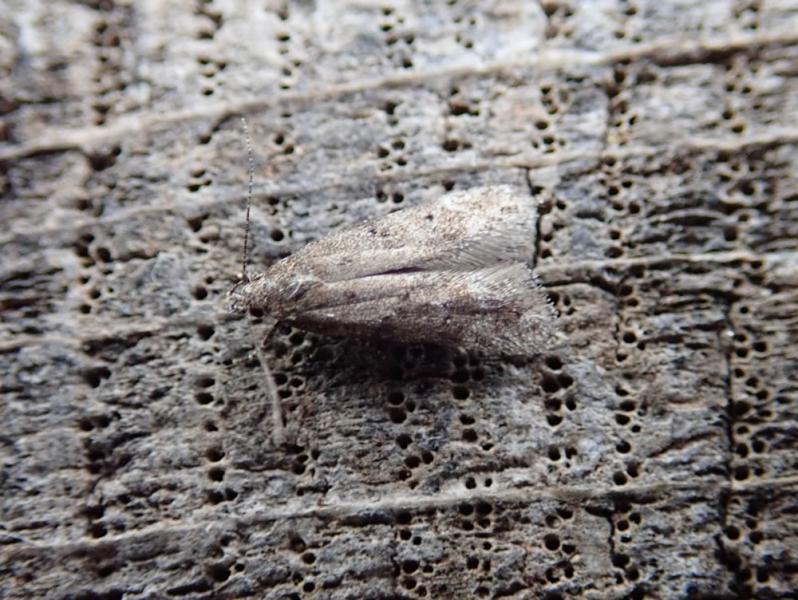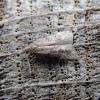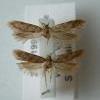Status and Distribution
A relatively recent addition to the British list having been discovered in The Burren, Ireland in 1961 and in England (Hampshire) in 1976.
Rare, with nearly all records from southern and south-eastern England and central western Ireland (where it is considered to be locally common). Has also been found on single occasion in east Cornwall in 1999 and in Monmouthshire in 2018, where it was new to Wales, suggesting that it may be over-looked in some areas.
There is plenty of potential for worn specimens to be confused with other more widespread gelechiid species. A record mentioned in MBGBI Vol 4(2) from Harrogate, Yorkshire on 11th August 1978 which had been dissected, has had the slide re-examined and was found to relate to Teleiodes vulgella.

Provisional map
Foodplant and Larval Feeding Signs
Corylus avellana,(hazel), see plant distribution map, Betula spp (birch) and Castanea sativa (sweet chesnut).
In Europe also found on Ostrya carpinifolia.
Feeds between two spuns leaves or in a folded leaf.
Habitat
Mixed deciduous woodland.
Finding the Moth
Larva: generally feeds between two spun leaves, one spun flatly over the other; less often in a folded leaf. A pupa from a larva found on birch has, on a single occasion, been known to over-winter twice before emergence.
Adult: rests on tree trunks by day and comes occasionally to light.
Similar Species
Teleiodes vulgella has the transverse bar of raised black scales on the forewing at three-quarters whereas in T. wagae there are four black spots in an outwardly oblique row at two-fifths. T. wagae can loose these spots when worn and could then superficially resemble worn specimens of Exoteleia dodecella, Bryotropha terrella and Teleiodes vulgella.
Other potential confusion species are Capatolechia notatella and greyish-tinged forms of Pseudotelphusa paripunctella. T. wagae has a more uniformly delicately mottled, lighter ground colour to the forewings, darker hindwings and the black dots are not followed by light scales. It also has the black dots (when still present) more distinct than in C. notatella which can be more streak-like and diffuse. Greyish forms of P. paripunctella can be similar but have more white-tipped scales on the forewing.
Genitalia dissection is recommended if there is any doubt.
Single brooded from mid-May to early July.
Earliest: 30th April 2011 (VCH9)
Latest: 16th July 1983 (VC15).
What was originally considered to be a verified specimen from Yorkshire dated 11th August 1978 (MBGBI Vol 4 (2)) has, on re-examination of the genitalia slide (held at BENHS, Dinton Pastures) in 2016, proved to be a different species.



